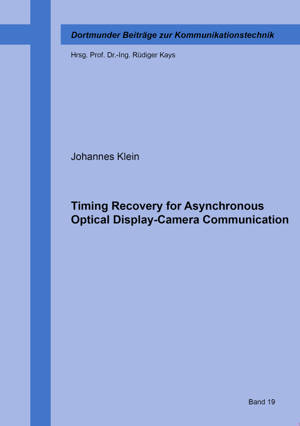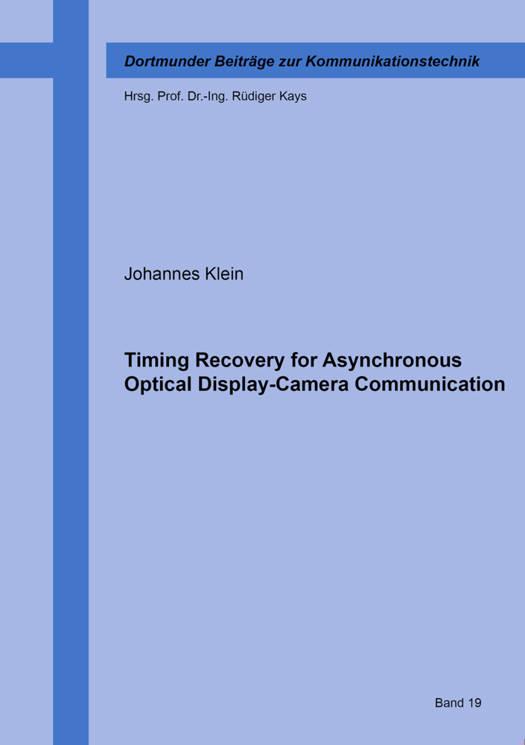
Door een staking bij bpost kan je online bestelling op dit moment iets langer onderweg zijn dan voorzien. Dringend iets nodig? Onze winkels ontvangen jou met open armen!
- Afhalen na 1 uur in een winkel met voorraad
- Gratis thuislevering in België vanaf € 30
- Ruim aanbod met 7 miljoen producten
Door een staking bij bpost kan je online bestelling op dit moment iets langer onderweg zijn dan voorzien. Dringend iets nodig? Onze winkels ontvangen jou met open armen!
- Afhalen na 1 uur in een winkel met voorraad
- Gratis thuislevering in België vanaf € 30
- Ruim aanbod met 7 miljoen producten
Zoeken
Timing Recovery for Asynchronous Optical Display-Camera Communication
Johannes Klein
€ 48,45
+ 96 punten
Omschrijving
In the field of Visible Light Communication (VLC), Display-Camera Communication (DCC) is a subcategory in which displays are used as transmitters and cameras as receivers. Data are represented in two-dimensional codes that are displayed by the transmitter screen to be recorded and decoded by the receiver system. One key challenge of this technology is the asynchronous nature of the image playback and video recording. Due to the random acquisition start as well as the different recording/playback characteristics, unsynchronized recordings often result in mixed images that contain parts of two or even three consecutive display frames. However, data decoding requires recordings of full display frames.In this thesis, the temporal sampling of the display by the camera sensor is investigated. The applied model takes into account the different camera shutter variants (Rolling Shutter (RS) and Global Shutter (GS)) as well as the typical line-by-line image refresh of modern displays. It is used to determine the relationship between display and camera parameters which is required for a full recovery of the display frames from asynchronous camera frames. From this relationship, the minimum required capture rate and the maximum available exposure time can be derived.A Timing Recovery (TR) method for invisible DCC is proposed that allows the timing of the video playback to be recovered by evaluating unsynchronized camera recordings. This enables the display frames to be fully reconstructed in the receiver, thus allowing the decoding of the data patterns without the need for synchronization. The information about the correct composition is obtained from the differential data modulation and the image content, so no visible synchronization markers have to be embedded.
Specificaties
Betrokkenen
- Auteur(s):
- Uitgeverij:
Inhoud
- Aantal bladzijden:
- 196
- Taal:
- Engels
- Reeks:
- Reeksnummer:
- nr. 19
Eigenschappen
- Productcode (EAN):
- 9783844086843
- Uitvoering:
- Paperback
- Afmetingen:
- 148 mm x 210 mm
- Gewicht:
- 291 g

Alleen bij Standaard Boekhandel
+ 96 punten op je klantenkaart van Standaard Boekhandel
Beoordelingen
We publiceren alleen reviews die voldoen aan de voorwaarden voor reviews. Bekijk onze voorwaarden voor reviews.











